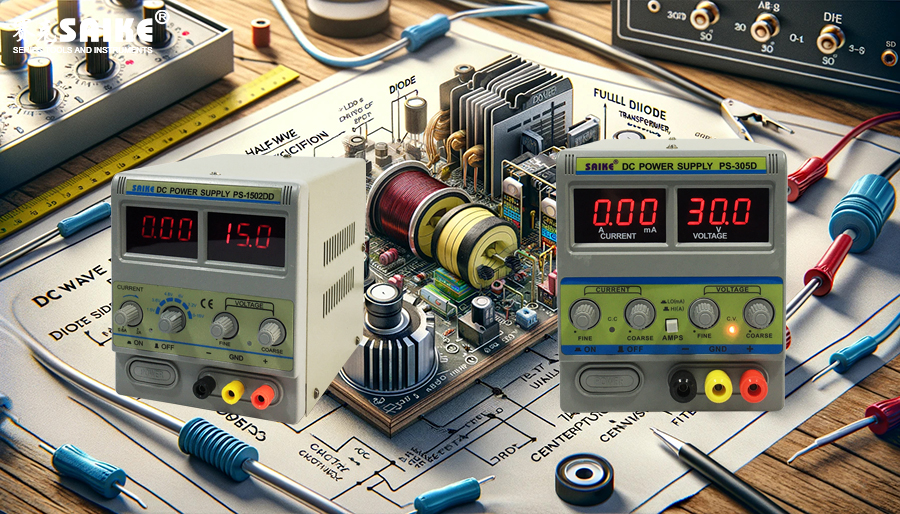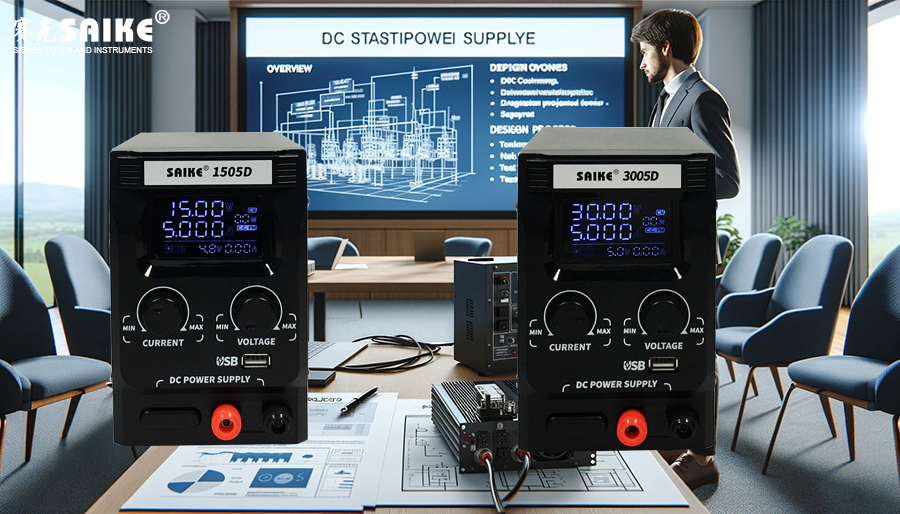
SK-YJ000ZLWYDY-KP 100006
The rectifier circuit is one of the core components in a DC stabilized power supply, primarily responsible for converting alternating current (AC) into direct current (DC). This process is crucial for all electronic devices that require DC input. This article will delve into the working principle of the rectifier circuit, covering its basic types and the functions of key components.
I. Basic Types of Rectifier Circuits
1.Half-wave Rectification
– A half-wave rectifier uses a single diode to block one half-cycle of the AC and allow only the other half-cycle to pass. This type of rectifier is structurally simple but relatively inefficient, and the output DC contains a significant ripple component.
2.Full-wave Rectification
– Full-wave rectifiers can more efficiently utilize AC power, allowing both half-cycles to be converted into DC. There are two common implementations of full-wave rectification:
– Bridge Rectification: Uses four diodes connected in a bridge configuration, allowing current to flow in the same direction during each half-cycle of the AC input.
– Center-tap Rectification: Utilizes two diodes and a transformer with a center-tapped secondary, where each diode conducts during one half-cycle of the AC input.
II. Key Components of the Rectifier Circuit
1.Diodes
– Diodes, which allow current to flow in only one direction, are the core components of the rectifier circuit. In both half-wave and full-wave rectification, diodes block reverse current and allow only forward current to pass.
2.Transformers
– In rectifier circuits, transformers are typically used to adjust the input voltage to an appropriate level. For center-tap rectification, the transformer also provides a neutral point for diode connections.
3.Filters
– Although not part of the rectification process itself, filters are often used in conjunction with rectifier circuits to reduce ripple in the output DC. Common filtering methods include capacitive filtering and inductive filtering.
III. Rectification Process
1.Half-wave Rectification Process
– In half-wave rectification, when the AC voltage is positive, the diode conducts, and current flows through the load. When the AC voltage is negative, the diode is cut off, and no current flows. Thus, the output is intermittent DC.
2.Full-wave Rectification Process
– In bridge full-wave rectification, a pair of diodes alternately conducts during each half-cycle, converting the entire AC cycle into a DC output. This method produces a smoother DC level with less ripple compared to half-wave rectification.
IV. Efficiency and Applications of Rectifier Circuits
1.Efficiency
– Full-wave rectification is more efficient than half-wave rectification because it converts both half-cycles of AC into DC, reducing energy waste.
2.Applications
– Rectifier circuits are widely used in power adapters, battery chargers, power supply modules, etc. Their design and selection depend on the required voltage, current, and output stability requirements.
V. Summary
The rectifier circuit is an indispensable part of the DC stabilized power supply. It converts AC into DC using diodes. Understanding its working principle, types, and the functions of key components is crucial for designing and maintaining DC power systems. Full-wave rectification is widely used in various electronic devices due to its high efficiency and stable output.


